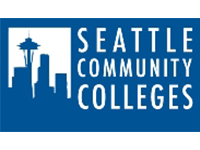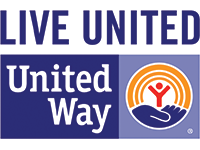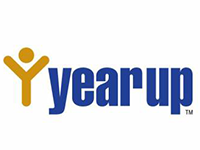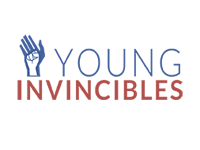Why Are Political Scientists Studying Ice Bucket Challenges?
 •
•
Fawn Johnson, Reporter
Who is more civically engaged—the person who votes in every election or the nonvoter who volunteers as a crossing guard at the local elementary school? What about the person who comments on an online news story? Does it count more if he posts the article on his Facebook page and urges his friends to act? What about the retired couple who takes care of the next-door neighbor’s kid after school until her single mom gets home from work?
The concept of civic engagement is mutating so fast that researchers are having a hard time keeping up with it. The Bureau of Labor Statistics has been collecting data on volunteering—defined as doing unpaid work through or for an organization—only since 2002. But even in that relatively short time period, that definition of “volunteering” has become far too limiting to cover the vast array of civic activity sprouting up online and in communities across the country.
Here’s just one example: Based on the BLS data alone, you would think that whites who graduated from college are far more likely to volunteer than African Americans or Hispanics with only high school degrees. But the the BLS’s data doesn’t take into account the retired couple mentioned above, who, based on cultural norms, is more likely to be black or Hispanic. It doesn’t capture the young adults in poor neighborhoods who tell those researchers that they consider being a role model to younger kids their most important contribution to their communities. Researchers say those informal forms of altruism are more common among minority communities, while BLS-type “volunteering”—say, being a tutor to a disadvantaged child—is more common among middle-class whites. Moreover, the BLS’s data only scratches the surface of political involvement.
“It’s class-biased. Working-class people don’t feel that they’re volunteering. Even when they are doing things like taking care of their neighbor’s kids, they don’t think they’re volunteering,” says Peter Levine, director of CIRCLE, a civics research and advocacy organization run out of Tufts University.
The way we think about civic engagement may be generation-biased as well. A new generation of young activists who are as skilled in digital communication as they are in rolling their eyes at their parents has upended the civic engagement paradigm. This summer’s viral Ice Bucket Challenge raised $115 million for research on the neurodegenerative disease ALS, even though the explanation of how the video trend got started or how it worked was never entirely clear. (That’s the way it is with most Internet trends.) Likewise, the most viral video ever, according to Time, advocated the capture of Joseph Kony, an indicted African war criminal. The U.S. Senate responded with a resolution condemning Kony, although the cult leader still remains at large.
Levine and his colleagues were instrumental in pushing the U.S. Census Bureau to add a series of questions to its Current Population Survey that might capture less traditional types of community involvement. Pollsters began asking respondents in 2008 if they have worked with neighbors to fix a community problem; if they have done favors for their neighbors; or if they are a member of any organization—whether it be religious, recreational, school, service, or sports.
The upshot is that we now know that well over one-third of Americans participate in one or more groups, the most common being religious and school organizations. We know that about 10 percent have served as a group officer or committee member of those organizations. We know that almost half of Americans talk to their neighbors frequently. About one-third of them discuss politics more than once a week.
Lo and behold, when you ask the right questions, the country doesn’t look nearly as disconnected as it might seem to the civics professors who wring their hands when only half of Americans vote.
“You don’t want to use words like ‘civic engagement.’ They don’t go over very well,” says Levine, who has tested these terms with survey respondents. “The whole ‘civic’ impulse of America is weak. Part of that is reflected in that the vocabulary is weak.”
If the popular vocabulary for civic engagement makes the average Joe yawn, it shouldn’t be a surprise that community activity looks more energetic when researchers ask about it more broadly. This past spring, an Allstate/National Journal Heartland Monitor Poll showed that about two-thirds of Americans have donated money to an organization, shared opinions through social media or email, and answer “somewhat often” or “very often” when asked, “How often do you volunteer in your community?”
The digital era is also allowing political and community activity to evolve in ways that Carrie Chapman Catt, founder of the League of Women Voters, would never have imagined. In the 1920s, the League prided itself on its extensive field contact in the smallest towns and remote regions. Now, grassroots activism flourishes on countless listservs and social media sites that don’t distinguish a mountaintop miser from an urban socialite.
New online communities develop every day, frustrating social scientists who are trying to document engagement trends over time. Social network users doubled from 2008 to 2012, according to the Pew Research Center, and 39 percent of the American adults who are online took part in political activity through social networking last year. Online activity is particularly prevalent among younger people, who have grown up with digital interactions. Two-thirds of adults ages 18 to 24 engaged in some sort of social network-related political activity in the course of a year, the Pew study found.
Does all this online activity translate into a more civically engaged adulthood? That’s what the researchers want to know. “We won’t have a sense of how it plays out later in their life unless we can go back to those people 10 years later and see where they’re at,” says Rebecca Rasch, senior project manager for Measure of America, a civic research organization separate from Pew.
It’s hard to know whether clicking “Like” on an issue-based Facebook page or favoriting a tweet will turn a person into a consistent voter or prompt her to donate to a political campaign. But that may be the wrong question anyway. Russell Krumnow, managing director of the economic equity coalition Opportunity Nation, thinks young peoples’ online activity will open new doors for political engagement that don’t conform to the old norms. “It’s shifting. It’s hashtag-activism. That translates into action,” he says.
The most cutting edge research in this area asks how civic engagement (admittedly, a hard-to-define term) impacts employment and economic growth. Economic health and civic engagement appear to be related to one another—i.e., higher civic engagement correlates with higher employment rates and more economic activity—but it’s not clear which factor is the cause of the other.
Engagement may be particularly important for young people. Opportunity Nation last month released a report showing that a young adult who volunteers is half as likely to be disconnected—unemployed and not in school—as a young adult who doesn’t. Previous research has shown that people who volunteer are 27 percent more likely to find a job than people who don’t.
Engagement can also change entire communities. Opportunity Nation found that regions where adults are more civically engaged are more economically vibrant as well. Research from the National Conference of Citizenship has shown that states with the highest “cohesion rates”—defined as talking to and trusting neighbors and frequently engaging with family and friends—had unemployment rates that were about 2 points lower than states with the lowest cohesion rates.
These studies only scratch the surface of the relationship between economic growth and civic engagement, but they are powerful catalysts for activists who want to promote such engagement. Citi Foundation Chief Operating Officer Brandee McHale says Opportunity Nation’s study about volunteerism and youth dovetailed perfectly with one of Citi’s new projects, called ServiceWorks, in which community youth design their own volunteer projects and market them to community leaders. McHale hopes that involvement will eventually translate into college and jobs for the participants.
“In civic engagement and projects, you build leadership skills, you build workplace skills,” she says. “We knew this in our gut. We didn’t have a whole lot of data to really back this up.” Citi funded the Opportunity Nation research and has just launched the first year of ServiceWorks.
The world has changed a lot since Robert Putnam wrote his seminal 2000 work Bowling Alone,chronicling the dissolution of traditional American communities. While it is still true that only about half of Americans vote, it is also true that galvanizing issues, like this summer’s police shooting in Ferguson, Missouri, are regularly trending on Twitter. As old institutions crumble, others will rise in their wake. It’s up to civic leaders to capitalize on those developments and recognize that communities are as active as ever.
Stephanie Stamm contributed to this article.












